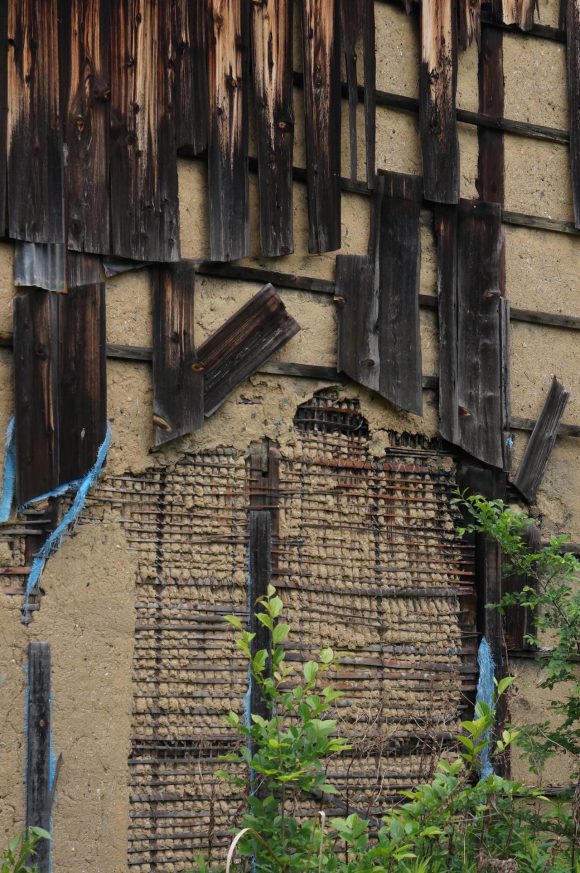Historically, the hull of Japanese houses was composed of wood and clay on wickerwork with a wooden casing often made from cedar. The wood darkens with time. Windows and doors can be completely shut. That is nice during the summer heat, I imagine. Many of the houses have corrugated sheet today. I suppose the wood is hidden underneath. Everything is kept very neat, people are cleaning and sweeping all the time, picking up the tiniest blossom leaves. Impermanence is visible too, though.
Lisa Allen, who I met in Kyoto, wrote an article about the traditional townhouse Machiya – very much worth reading! With that background I was able to understand the meaning and function of these rooms and materials even better.
My gratitude goes to Hiromi and Jack Convery who let us take part in their tea ceremony. For a few unforgettable hours, we could experience the house, listen to the wind and to the sound of water simmering in the kettle over charcoal. We wonderedwhat the cold must be like here in winter and mused on other things.
Places kept opening up impressing me with their clear-cut elegance, their simplicity and warmth. I would like to sit at one of the fires in the rooms of a Machiya and look at the snow in the garden through a small open window.
I am of course not talking about the contemporary Japanese type of structures built from concrete and steel, the sound of air-conditioning, or the endless masses of construction we watched from the train.
The pictures in this gallery have been taken everywhere: in private houses, restaurants, and in shops. A lot of them were taken on my iPhone.
Splinters of stories untold
* Materials are allowed to age with dignity. Andrew Juniper describes Wabi Sabi as a design principle very well in his book on the “Japanese Art of Impermanence”.
* Everything is being cared for so attentively, the rooms are smaller, everything is reduced, less, clearer.
* I guess this is where “elegance” was invented.
* German laws for saving energy seem absurd when I look at the beauty of handmade single glazings or modern architecture trying to solve climate issues technically, inevitably consuming energy.
* Japanese public bath houses are worth a story of their own.
* the Edo period – 250 years of peace and cultivating the arts
* article 9 of the Japanese constitution and the peace movement
